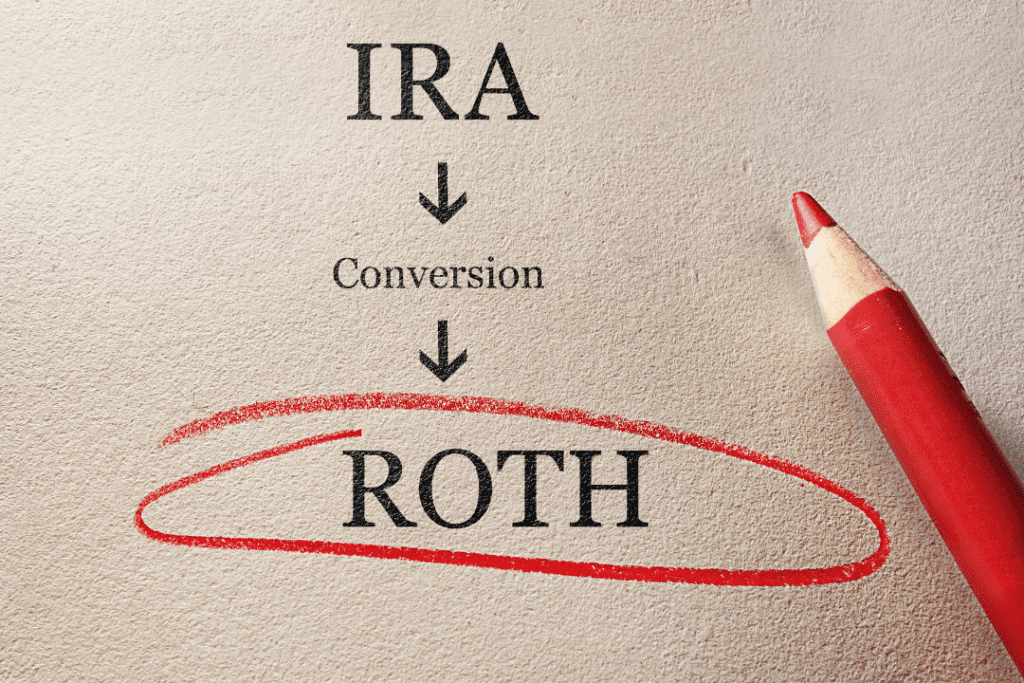What is Tax Planning: A Comprehensive Guide (2026)
What is tax planning? Tax planning is often overlooked by people who might otherwise feel good about their finances.
But managing your total income and keeping your tax burden low is crucial to optimizing your financial situation. Proper tax planning allows more of your money to go to what’s important.
Table of contents
Tax planning definition
Tax planning can be defined as:
Analyzing all aspects of a financial situation and developing a plan to ensure the most tax-efficient way to achieve one’s goals.
In other words, the objective of tax planning is not just to minimize income taxes at the expense of your other financial goals. Tax planning is also not:
- Tax preparation. Proper tax planning is done well before filing the tax return. Tax return preparation might be better described as an indicator of how effective your tax planning is.
- Tax evasion. Tax evasion is the use of illegal means to avoid paying taxes, usually be misrepresenting one’s income to the Internal Revenue Service (IRS). On the other hand, tax planning is the use of legal tax strategies and decision making to lower one’s tax liability.
Is tax planning similar to tax advice?
They’re similar, but not quite the same. Tax advice can only be legally given by certain individuals, while anyone can perform tax planning.
What is tax advice?
According to the Internal Revenue Code, tax advice means:
Advice given by an individual with respect to a matter which is within the scope of the individual’s authority to practice.
26 USC § 7525(a)(3)

Who can give tax advice?
The IRS recognizes the following types of individuals as authorized to give tax advice:
- Enrolled agents
- Enrolled actuaries
- Enrolled retirement plan agents
- Attorneys
- Certified Public Accountants (CPAs)
What is an enrolled agent?
According to the IRS, an enrolled agent is a person who “has earned the privilege of representing taxpayers before the Internal Revenue Service by either passing a three-part comprehensive IRS test covering individual and business tax returns, or through experience as a former IRS employee.”

Enrolled agent is the highest credential that the IRS awards. Enrolled agents must take 72 hours of continuing tax education every three years and meet certain ethical standards.
What is an enrolled actuary?
An enrolled actuary is someone who has satisfied the standards and qualifications of the Joint Board for the Enrollment of Actuaries, and has been approved to perform actuarial services. Most enrolled actuaries work for companies, so you won’t see them do tax planning for individuals.
What is an enrolled retirement plan agent?
Enrolled retirement plan agents are retirement plan professionals who can represent clients before the IRS but are not otherwise included in the above list of qualified individuals. Like enrolled actuaries, enrolled retirement plan agents generally do not work with individual taxpayers.
You must be recognized by the IRS as a tax practitioner to give tax advice. Conversely, anyone can perform tax planning to incorporate tax efficiency into their portfolio.
For example, many financial planners do tax planning but are not tax practitioners. But first, you need to know some key tax planning concepts.
Key tax planning concepts
Taxable income vs. adjusted gross income vs. gross income
When discussing income, you should know the difference between these three types of income.
- Gross income. The tax code defines gross income as the total of all sources of taxable income. This includes wages, dividends, capital gains, retirement distributions, and other types of income. Gross income does not include income that is specifically excluded.
- An example of excluded income is capital gains from the sale of a primary residence that meets the criteria for Section 121 exclusion.
- Adjusted gross income. Adjusted gross income (AGI) is simply gross income minus adjustments to income. These adjustments are also known as ‘above the line’ deductions.
- Taxable income. Taxable income is AGI minus the greater of either the standard deduction or the total itemized deductions. Itemized deductions that subtract from AGI are also known as ‘below the line’ deductions.
Some other key points to know:
- Gross income > AGI > taxable income.
- Above the line vs. below the line deductions: An easy way to remember the difference is to look on a tax return.
- Above the line deductions are found on Schedule 1 of your 1040, under Part II, adjustments to income.
- Below the line itemized deductions are found in Schedule A.
- Many tax planning opportunities are based upon AGI, not taxable income. It’s important to keep this in mind as you do tax planning.
Tax brackets
An income tax bracket is the range of taxable income a taxpayer’s taxable income falls in.

There are currently 7 tax brackets ranging from 10% to 37%. The following factors determine your tax bracket:
- Amount of taxable income
- Tax filing status
Taxpayer filing status
Your tax filing status can be:
- Single (unmarried)
- Married, filing jointly
- Married, filing separately
- Head of Household
- Qualifying widow/widower
- A qualifying widow(er) is in the same tax bracket as a married couple filing a joint tax return
Below are the 2026 tax brackets.
2026 tax brackets for single taxpayers
| Tax bracket | Minimum income | Maximum income |
| 10% | 0 | $12,400 |
| 12% | $12,401 | $50,400 |
| 22% | $50,401 | $105,700 |
| 24% | $105,701 | $201,775 |
| 32% | $201,776 | $256,225 |
| 35% | $256,226 | $640,600 |
| 37% | $640,601+ | N/A |
2026 tax brackets for married taxpayers filing a joint return
| Tax bracket | Minimum income | Maximum income |
| 10% | 0 | $24,800 |
| 12% | $24,801 | $100,800 |
| 22% | $100,801 | $211,400 |
| 24% | $211,401 | $403,550 |
| 32% | $403,551 | $512,450 |
| 35% | $512,451 | $768,700 |
| 37% | $768,701+ | N/A |
2026 tax brackets for married taxpayers filing a separate return
| Tax bracket | Minimum income | Maximum income |
| 10% | 0 | $12,400 |
| 12% | $12,401 | $50,400 |
| 22% | $50,401 | $105,700 |
| 24% | $105,701 | $201,775 |
| 32% | $201,776 | $256,225 |
| 35% | $256,226 | $640,600 |
| 37% | $640,601+ | N/A |
2026 tax brackets for heads of household taxpayers
| Tax bracket | Minimum income | Maximum income |
| 10% | 0 | $17,700 |
| 12% | $17,701 | $67,450 |
| 22% | $67,451 | $105,700 |
| 24% | $105,701 | $201,775 |
| 32% | $201,776 | $256,200 |
| 35% | $256,201 | $640,600 |
| 37% | $640,601+ | N/A |
Your tax bracket is also known as a marginal tax bracket.
For example, if you are a single taxpayer with $80,000 in taxable income, you are in the 22% marginal tax bracket. If your income increased to $100,000, then you would go from the 22% bracket to the 24% tax bracket.
Marginal tax bracket vs. average tax rate
Just because you’re in the 22% tax bracket does not mean that you’re paying 22% tax on all of your income. In the above example, a single taxpayer with $80,000 in taxable income would pay $13,217 in federal income tax. This comes out to an average tax rate of 16.5%.
So, why the difference?
First, you’re paying taxes on your taxable income. This is lower than your gross income, or your AGI. Your taxable income is the income remaining after your deductions (both above the line and below the line).
Second, you’re only paying 22% on the income in that bracket. In other words, think of tax brackets as ‘tax buckets.’ First, you ‘fill up’ the 10% tax bucket, before moving to the 12% bucket. Once you have filled the first bucket, you move to the next bucket, etc.
Tax bucket example
So as a single taxpayer, let’s imagine you’re paying taxes on $80,000 taxable income as outlined below:
- 10%: $0 to $12,400 ($1,240)
- 12%: $12,401 to $50,400 ($4,560)
- 22%: $50,401 to $80,000 ($6,512)
- Total: $12,312
- Average tax rate: 15.4% ($12,312 divided by $80,000)
And if your income increased to $90,000, then you would pay an additional $2,200, or a total of $14,512. That comes out to 16.1%, which is much lower than 22% or 24%.
As a general rule, your average tax rate will always be lower than your marginal tax bracket, unless you fall in the 10% tax bracket.
Above the line vs. below the line deductions
As previously mentioned, there is a distinction between the two.
Above the line deductions are tax deductions to calculate AGI, while below the line deductions are deductions from AGI. Of the two, above the line deductions are preferable to below the line tax deductions for two reasons.
Above the line deductions always count
AGI plays an important role in determining income-based phaseouts for tax credits, Roth IRA contributions, and other tax planning opportunities. Because they lower AGI, above the line deductions are always beneficial in lowering your tax bill.
In general, below the line deductions only count if you itemize deductions. For example, medical expenses are a below the line deduction. But if you choose to use the standard deduction, you cannot use medical expenses to lower your taxable income.
Examples of above the line deductions
Below is a partial list of above the line deductions you will find on Schedule 1:
- Educator expenses
- Business expenses for reservists
- Health savings account deductions
- Moving expenses for members of the Armed Forces
- Self-employment tax
- Self-employed SEP, SIMPLE, and qualified retirement plans
- Self-employed health insurance deduction
- Alimony paid (due to the Tax Cuts and Jobs Act, alimony can only be deducted on divorces effective before January 1, 2019).
- IRA deductions
- Student loan interest
Examples of below the line deductions
Below the line deductions are only taken if you choose to itemize deductions on Schedule A:
- Medical & dental expenses (to the extent they exceed 7.5% of AGI)
- State taxes and local taxes paid (up to $10,000)
- Interest paid (usually for a mortgage, but also for investment interest as well)
- Charitable contributions (subject to certain limitations)
- Casualty & theft losses (must be due to a federally declared disaster)
There are other itemized deductions available (like gambling losses or federal estate tax on behalf of a decedent). However, fewer people are itemizing deductions today. Why?
Standard deduction vs. itemized deductions
The Tax Cuts and Jobs Act (TCJA), the tax law passed in 2017, significantly raised the standard deduction.
| Taxpayer’s filing status | Standard deduction in 2017 (before TCJA) | Standard deduction in 2018 (after TCJA) | Standard deduction in 2026 |
| Single | $6,350 | $12,000 | $16,100 |
| Married filing jointly | $12,700 | $24,000 | $32,200 |
| Married filing separately | $6,350 | $12,000 | $16,100 |
| Qualifying widow(er) | $12,700 | $24,000 | $32,200 |
| Head of household | $9,350 | $18,000 | $24,150 |
As you can see, the standard deduction is virtually twice as much as it was before TCJA was passed. In addition, TCJA eliminated the personal tax exemption for each household member.
Additionally, Congress placed limits on the deductibility of state & local tax.
As a result, the Tax Foundation estimates that over 88% of households now take the standard deduction. This is up from under 70% before TCJA.
Qualified business income (QBI) deduction
The QBI deduction is technically a ‘below the line’ deduction, because taxpayers calculate the QBI deduction after calculating AGI. However, eligible taxpayers may take the QBI deduction regardless of whether they itemize deductions on Schedule A.
To take the QBI deduction, taxpayers may file either:
- IRS Form 8995, Qualified Business Income Deduction – Simplified Calculation, or
- IRS Form 8995-A, Qualified Business Income Deduction
Tax credits vs. tax deductions
Which is better, a tax credit or a tax deduction? If you guessed tax credit, you’re right! Here’s the difference between the two.
A tax credit reduces your tax liability, dollar for dollar. A tax deduction reduces your taxable income. This reduction in taxable income reduces your tax bill at your marginal tax rate.
Let’s imagine that your total tax liability for the current year is $20,000. You’re in the 24% tax bracket. You’re faced with a $1,000 tax credit vs. a $1,000 tax deduction. Here’s the difference:
Tax credit: A $1,000 tax credit will reduce your tax liability by $1,000. This means your new tax bill is only $19,000.
Tax deduction: A $1,000 tax deduction will reduce your taxable income by $1,000. At the 24% marginal tax rate, this means you’ll save $240.
And if it’s an itemized deduction, you have to see if you’re better off taking the standard deduction anyway.
Basic tax planning strategies to consider
Now that you understand some tax concepts, let’s discuss some basic tax planning strategies. These are tips that you can do yourself without having to talk with your financial advisor or tax professional.
Adjust your tax withholdings throughout the year
How much money did you pay in taxes at tax time? Did you receive a huge tax refund instead?
Unless you have a significant change in income, it’s a good idea to try to keep your tax bill (or refund) under $1,000. If you either owed or received over $1,000 last tax season, then you might want to adjust your tax withholdings.
How do I adjust my tax withholdings?
The easiest way to adjust your tax withholdings is by looking at your Form W-4. A Form W-4 is the tax form that you complete so your employer can withhold the correct amount of federal income tax from your compensation. In other words, if you’re paying the wrong amount of money in taxes, you can direct your boss or your company to make the change.

If it’s been a while since you updated your W-4, you’ll want to ask your employer what they have on file. That way, you have a baseline to make adjustments.
The easiest way to increase withholdings is in block 4(c), extra withholding, of your W-4. In that block, you can increase the your tax by a specific amount.
If you received a large refund last tax season, you may need to decrease tax withholdings. If that’s the case, you’ll want to do one of two things:
- Check block 4(c) in your previous W-4. If there’s a dollar amount there, then start by decreasing (or eliminating that amount).
- If there is no extra withholding, then you may need to go through the W-4 more thoroughly. The Form W-4 instructions can help you with calculating your tax withholdings if you:
- Have more than one job
- Expect to itemize deductions
- Have income from sources where you don’t have tax withholding
How do I know how much to change my withholdings?
You don’t have to be a tax expert to make some adjustments. You need to know:
- How much you owed last year, or how big your refund was
- How often you get paid by your employer
Once you have that information, you simply need to do some math.
Example of withholdings adjustment
Let’s assume that last year, you owed the IRS $2,600. You get paid bi-weekly, so there are approximately 26 pay periods in a calendar year. If you increased tax withholdings by $100 per pay period, you would expect to get pretty close to zero.
Will you reach zero? Of course not.
Depending on when you update your W-4 the following year, you probably won’t get it exactly right. But you should be closer than before.
What if I can’t figure out the dollar amount?
In another example, let’s assume you’re trying to lower your tax withholding. This happens a lot to parents who lose their child tax credit. It also happens to people who might not have reviewed their W-4 in a long time.
By reviewing the W-4 in more detail, you should be able to follow the instructions to get closer to the proper withholdings. If you can’t do this by yourself, you might want to talk with your CPA or tax advisor .
The difference between bi-weekly and semi-monthly paychecks
A common mistake people make is not knowing the difference between bi-weekly and semi-monthly pay periods.
- Bi-weekly: Every two weeks. Usually 26 pay periods per year.
- Semi-monthly: Twice per month. Usually on the 1st (or the last day of the previous month) and the 15th. 24 pay periods per year.
The difference between bi-weekly and semi-monthly is two pay periods per year. If you don’t account for that this year, you’ll be doing this over again the following year.
Take advantage of employer sponsored tax breaks
You don’t need financial professionals to tell you that it’s good to contribute to your 401k. The good news is that you get more than just tax benefits by maxing out your employee benefits. Let’s look at a few common examples of workplace sponsored tax breaks.
Employer-sponsored savings plans
Contributing to a 401(k), or another employer plan is a starting point for most people. There are two types of employer-sponsored plans: qualified plans and non-qualified plans.
What is the difference between a qualified plan and a non-qualified plan?
A qualified plan is one that meets the federal requirements under the Employee Retirement Income Security Act of 1974 (ERISA). Employers who offer qualified plans to their employees usually receive significant tax benefits.
Examples of qualified plans include 401(k) plans or 403(b) plans
A non-qualified plan may still be tax-deferred or tax-advantaged to the employee. However, non-qualified plans do not meet ERISA requirements. Usually, a company will offer a non-qualified plan for employees who have already maximized their retirement savings in a qualified plan.
Examples of non-qualified plans include deferred compensation, or 457 plans.
From an employee’s standpoint, there isn’t a whole lot of difference between the two. Most people should have at least one type of plan. And if you have the cash flow (from adjusting your withholdings), then you’ve already got a way to increase your savings.
The bonus is that many employers make matching contributions to their employees’ retirement plans. Even if you can’t afford to contribute the maximum amount each year, you should contribute enough to receive the full match.
Otherwise, you’re leaving money on the table.
Health savings account (HSA)
An HSA is a tax-advantaged savings account for employees in high-deductible health plans (HDHP). If your employer offers an HSA, then you should consider taking it.
HSAs are one of the few triple-advantaged tax savings vehicles. The tax treatment of HSAs is as follows:
- Contributions are made with pre-tax dollars. In other words, you don’t pay taxes on your contributions.
- Earnings accumulate tax-deferred. You don’t pay taxes while the money is in your account.
- Qualified withdrawals are tax-free. You don’t pay taxes on money you withdraw to pay qualified medical expenses.
Flexible spending arrangement (FSA)
FSAs are sometimes known as cafeteria plans or Section 125 plans. Depending on your employer, an FSA might be used to cover different types of employee expenses, such as:
- Parking & transportation
- Child care
- Dental benefits
- Vision benefits
- Out of pocket medical costs not covered by an HSA
Like an HSA, funds in an FSA used for qualifying expenses can be excluded from income. However, there are certain IRS limitations that apply, in addition to those imposed by your employer.
If you’re considering an FSA, it’s best practice to talk with your HR department before participating.
Maximize IRA contributions
You’ve maxed out your employer-sponsored programs, but you’re still looking for more? Start with your individual retirement account, or IRA. We’ll start by covering the two basic types of IRAs.
Types of IRAs
There are two types of IRAs you should know about:
- Traditional IRA: In a traditional IRA, contributions (usually) are made pre-tax. This means they can be deducted from your gross income, on line 20 of Schedule 1. Earnings are tax-deferred, and qualified withdrawals are taxed at ordinary income rates.
- Roth IRA: In a Roth IRA, contributions are made with after-tax dollars (meaning you pay taxes on the money you contribute to a Roth IRA). However, your earnings are tax-deferred, and qualified withdrawals are tax-free.
IRA considerations

Should you contribute to a traditional or Roth? It depends on your financial situation. But here are some things you should know.
There are annual limits to how much you can contribute to an IRA.
In 2024, you can contribute a maximum of $7,000 to either a Roth IRA, traditional IRA, or a combination of both. If you are 50 or older, you can contribute an additional $1,000 (for a total of $8,000).
This limit applies to each spouse. A husband and wife can contribute a total of $14,000 to $16,000 in 2024, depending on their age.
You cannot contribute more than your household’s earned income. Earned income is income derived from a job or self-employment. So retirees with zero earned income cannot contribute to an IRA.
You can contribute to an IRA even if you do not work outside the home, as long as your spouse does.
You might not be able to contribute to a Roth IRA if you earn too much money.
If your modified adjusted gross income (MAGI) is too high, you might be subject to a phase-out. What is MAGI? It’s your AGI with some adjustments to your income.
MAGI can be confusing, since the IRS prescribes different formulas for different scenarios. In Publication 590-A, the IRS publishes a worksheet to help calculate Modified Adjusted Gross Income for Roth Purposes.
The 2026 phase-outs for taxpayers are below:
| Taxpayer status | Phase-out starts | Phase-out ends |
| Single or head of household | $153,000 | $168,000 |
| Married filing jointly | $242,000 | $52,000 |
| Married filing separately | $0 | $10,000 |
If you’re not familiar with phase-outs, that’s okay. Let’s walk through this scenario for three taxpayers at varying income levels. They are all single filers.
- Betty’s MAGI is $80,000 in 2026. She can make the full contribution to her Roth IRA.
- David’s MAGI is $170,000. He cannot contribute to his Roth IRA at all.
- John’s MAGI is $160,000. He can make a partial contribution (which he will discuss with his tax advisor).
You might have limitations on your ability to deduct contributions to a traditional IRA.
Whether or not you can contribute to a Roth, you can always contribute to a traditional IRA. The question is: Can you deduct the contribution?
The answer: It depends.
If neither you nor your spouse participate in an employer-sponsored retirement plan, such as a 401(k), then the answer is always “Yes.”
If either you or your spouse participate in a workplace retirement plan, then you’re subject to income-based phase-outs, similar to Roth IRA contributions. Of course, the IRS has a different MAGI table for determining the deductibility of traditional IRA contributions.
And the IRS has different phaseout tables, as outlined below.
| Taxpayer status | Phase-out starts | Phase-out ends |
| Single (participates in plan) | $81,000 | $91,000 |
| Married filing jointly (participates in plan) | $129,000 | $149,000 |
| Married filing jointly (doesn’t participate, but spouse does) | $236,000 | $246,000 |
| Married filing separately | $0 | $10,000 |
Just because you can’t deduct traditional IRA contributions this year doesn’t mean all is lost.
Even if you cannot deduct your IRA contribution, you should still consider making the contribution anyway.
Your earnings will still grow tax-deferred. This can benefit you in the long run, depending on your investment options. With effective tax planning, you can eventually make use of those nondeductible IRA contributions by doing Roth conversions.
In fact, nondeductible IRA contributions can be a great way to do backdoor Roth conversions, which we’ll discuss under Advanced Tax Planning, in the next section.
You don’t have to contribute to an IRA by the end of the tax year.
You have the option to make any IRA contribution by the end of the tax year’s filing deadline. For the 2025 tax year, the filing deadline is April 15, 2026.
Advanced tax planning to discuss with your tax advisor
So you’ve tweaked your withholdings, you’re maxing out the contributions to your retirement accounts, and maximized your employee benefits. What next?
Each tax situation is different. The best way to proceed is to discuss your tax strategy with your tax advisor. Here are some more advanced tax considerations you may discuss.
Roth conversions
Roth conversions won’t necessarily save you money in the current tax year. However, they can be a powerful tool for long term financial planning.
A Roth conversion is when you transfer money from a pre-tax retirement account (like a traditional IRA) into a Roth IRA. You do have to pay taxes on a Roth conversion, unless the converted amount is from a nondeductible IRA, which you already paid taxes on.

In order to consider how Roth conversions fit into your personal finances, you should consider:
- Your current tax bracket versus your future tax bracket. Many retirees find themselves in a lower tax bracket than when they were working. For them, the best opportunity for Roth conversions might be after they’ve retired, but before they start collecting Social Security and start withdrawing from their IRAs.
- Avoiding or lowering future required minimum distributions (RMDs). As of today’s writing, RMDs start at age 72. Many people get frustrated that they have to withdraw from an IRA (and make tax payments) even if they don’t need the money.
- Lowering taxes for your beneficiaries. Even if you die before making withdrawals, your Roth conversions will still have a benefit. When your family members inherit your Roth accounts, they won’t have to pay taxes on the withdrawals.
Capital loss harvesting
Capital loss harvesting is the purposeful sale of investments, like mutual funds or stocks, at a loss. Why would you want to sell investments at a loss?
That loss can be used to offset either:
- Capital gains, or
- Ordinary income (up to $3,000 per year).
Any unused capital losses can be carried forward to next year.
You might not do capital loss harvesting for tax reasons alone, but as part of an investment strategy. To maintain that investment strategy, periodic rebalancing is important.
In that case, capital loss harvesting might be used to help keep the portfolio properly balanced. Capital losses can also be used to offset capital gains elsewhere in the portfolio. But you might have more in capital gains than losses.
Depending on your tax bracket, you might have another option.
Capital gains harvesting
Capital gains harvesting is the exact opposite of capital loss harvesting. Instead of trying to generate losses in your portfolio, you might try to accelerate gains.
Why would you do this? Several possible reasons:
- You’re in a preferred tax bracket for long term capital gains harvesting.
- Capital gains for taxpayers in the 12% tax bracket are taxed at 0%.
- You might need unwind from a large stock position. Instead of selling everything at once, you might do it over several years. This happens a lot to people who accumulate a lot of employer stock over time.
- Part of an overall rebalancing strategy
- Generate cash
Types of capital gains
There are two types of capital gains, short term and long term.
- Short term capital gains: These are capital gains on investments held for one year (365 days) or less. Short term capital gains are taxed as ordinary income (at your marginal tax rate)
- Long term capital gains: Capital gains on investments held for over one year (366 days or longer). Long-term capital gains are taxed differently.
Long term capital gains can be taxed at either 0%, 15%, or 20%. Regardless of your marginal tax bracket, your capital gains tax rate (referring specifically to long term capital gains) will always be lower than your marginal tax rate.
If you’re in the 0% capital gains tax bracket (which happens to be at the 10% or 12% marginal tax rate), then you have a great opportunity. You can generate additional long term capital gains (up to the 0% capital gains limit) without paying any additional tax.
Since it can be difficult to pinpoint your exact tax liability, you’ll want to discuss this with your financial planner or tax advisor. That way, you’ll avoid any unnecessary tax implications.
Timing of income
What does timing of income mean? For tax purposes, income is earned in the year that it is earned, or that you have a reasonable expectation of having access to the money.
For example, let’s imagine you’re a small business owner. It’s getting close to the end of the tax year, December 31, and you have a business decision to make.
One of your customers needs a product by January 15, but doesn’t really care if they receive it before then. Your accountant has already told you that income is earned when you invoice, not when you get paid.
You might consult with your tax advisor about your tax situation before you decide whether to:
- Ship the product and invoice for the delivery before the end of the year.
- Wait until January to ship the product.
Timing of income principles also apply to individual investors. You might decide which year to:
- Sell a particular stock
- Make IRA withdrawals
- Cash in a life insurance policy
- Make charitable contributions
Charitable planning
Charitable giving is very important to a lot of people. According to Giving USA, American individuals, bequests, foundations and corporations gave an estimated $449.64 billion to U.S. charities in 2019.
And done properly, charitable giving can have some tax benefits. This is true even though there are fewer opportunities to include charitable gifts as an itemized deduction.

Here are some ideas to discuss with your tax advisor:
Bunching contributions
Instead of giving the same amount every year, you might decide to ‘bunch’ two years’ worth of contributions into one year, and taking the standard deduction the following tax year. Your financial advisor should be able to run a tax projection to see if you save money by bunching contributions.
Gifting appreciated securities
If you sell a stock to generate money for charity, you may have to pay taxes on the capital gains. But if you gift the appreciated stock directly to the charity, you can avoid the gains.
And since qualified charities don’t pay taxes, more of your money goes directly to the cause you’re trying to support.
Donor advised funds
Some people use this in conjunction with gifting appreciated securities. A donor advised fund can grow over time and allows the donor more control over which charities receive money each year.
Most major financial institutions offer donor advised funds.
Qualified charitable distributions
If you are 70 1/2 or older, you can donate directly to a charity from your IRA. This is known as a qualified charitable distribution (QCD). Here are some things to know:
- QCDs are not taxable.
- If you’re 72 or older, a QCD can reduce your RMD dollar for dollar.
- You can do QCDs regardless of whether you’re itemizing deductions or donating appreciated stock.
- QCDs are limited to $100,000 per year per taxpayer. So a married couple could contribute up to $200,000 per year, as long as each spouse stays under the limit.
- You cannot make a QCD to a donor advised fund.
Tax planning next steps
Tax planning is a crucial part of the financial planning process. To recap, here are three things you can do today:
1. Perform a self audit of your tax situation.
Go back through this article and adjust your tax withholdings. Look through your employee benefits to make sure you’re taking advantage of everything you can.
Even if you don’t have a tax advisor, you can probably do a lot of things on your own.
2. Hire a tax advisor.
You should have a tax professional to help you with your tax planning. But if you don’t, then take the time to hire one.
Most accountants are busy during tax season, but are available during the summer and early fall. Use this time as an opportunity to see what tax planning looks like.
3. Set up a tax planning appointment.
I used to have clients who liked the idea of working with a tax professional. But during tax season, they never bothered to schedule an appointment.
Don’t make this mistake. Click this link to schedule an appointment and start today.

Thank you. I enjoyed reading your articles.
Clarification this article (What is tax plainning) under the header please –
Examples Of Below The Line Deductions
Below the line deductions are only taken if you choose to itemize deductions on Schedule A:
QBi 2023 on 1040 line 13 is below the line deduction that is available for qualified taxpayers regardless standard or schedule a deducttions. Of course, QBI is short-lived. It will be pahsed out in 2025, if it is not extended.
Thank you,
Carol
Hi Carol,
I get your point, and updated the article accordingly (as well as a few other updates). Thank you for pointing that out!